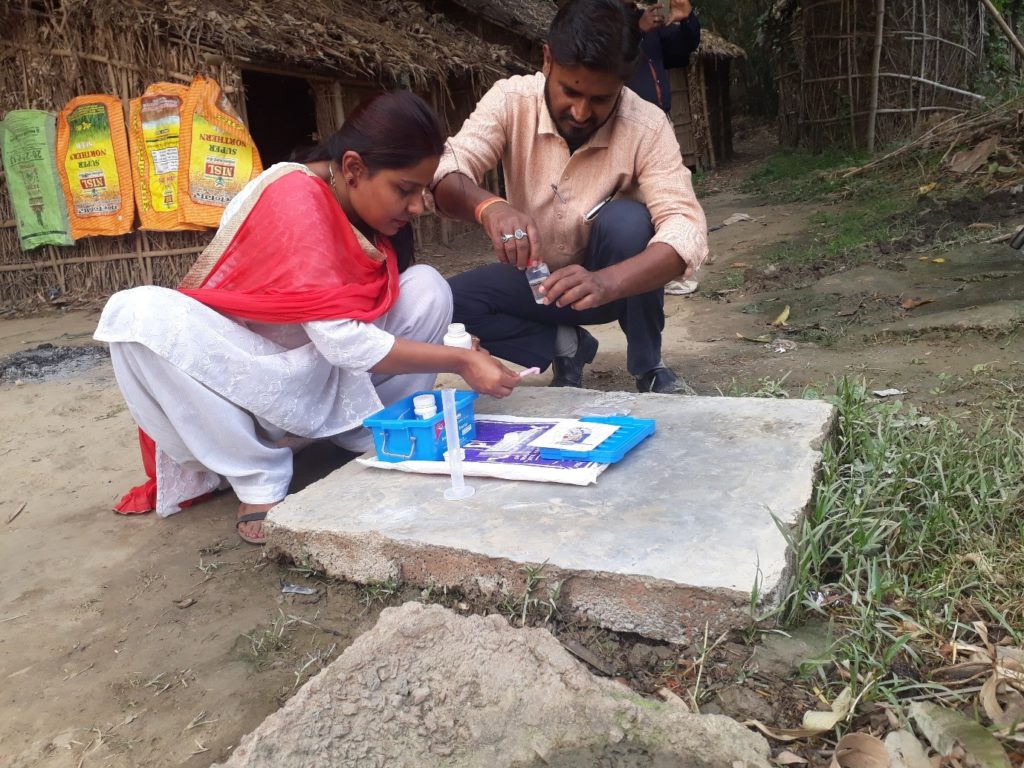On February-March 2020 SaciWATERs conducted a series of workshops about the harmful effects of arsenic consumption in 16 schools in Kahalgaon and Pirpanti of Bhagalpur district of Bihar, India. The workshops were run with the support of UNICEF. Around 989 students of standard 7th, 8th and 9th & 45 teachers participated in the training program.
The training program included classroom sessions, open discussions and live experiences with arsenic testing kits. During the classroom sessions, the district coordinator spoke about Arsenic and its impact on health, role of nutrition for the prevention of arsenicosis, alternative safe water sources (rain water harvesting, pond rejuvenation etc.) and arsenic removal technologies.
An experiment with the three-pitcher sand filter technology was done with the teachers and students of the school. In addition to that, students were also taught how to test arsenic level in water using field testing kit.
Out of 38 districts around 18 districts of Bihar have reported arsenic concentrations above 50 parts per billion. Moreover, a large number of cancer cases in Bihar are likely to be tied to high levels of arsenic on its groundwater. Considering the aforementioned, it is of important to teach the students and children about water conservation. The training programs were a way to engage students in science and local environmental monitoring. The response from the students revealed that the training programs contributed in raising awareness about the arsenic issues in the groundwater and that these types of capacity building training program could also be conducted not only in schools but also in colleges, universities and other educational institutions.
About arsenic contamination
Arsenic (As) contamination in groundwater in the Ganga- Brahmaputra fluvial plains in India and its associated health impact have been reported as one of the world’s biggest environmental hazard to humankind.
In India 86 districts located in Bihar, West Bengal, Assam, Punjab, Karnataka, Haryana, Jharkhand, Uttar Pradesh and parts of Manipur and Chhattisgarh are affected by arsenic contamination.
Arsenic contamination is a complex and challenging issue as the substance is dangerous even in minor quantities (>10 μgl1). Although the World Health Organisation recommends 10 μgl1, India and Bangladesh allow up to 50 μgl1 and it is neither visible nor does it affect the smell or taste of the drinking water. However, the poisoning signs appear over time and involve complicated testing and diagnosis. The visible symptoms of arsenic poisoning also bring social stigma along with it. A long-term research on the issue has revealed that there is a lack of awareness and capacity among the communities to deal with the negative impact of the arsenic contamination.

